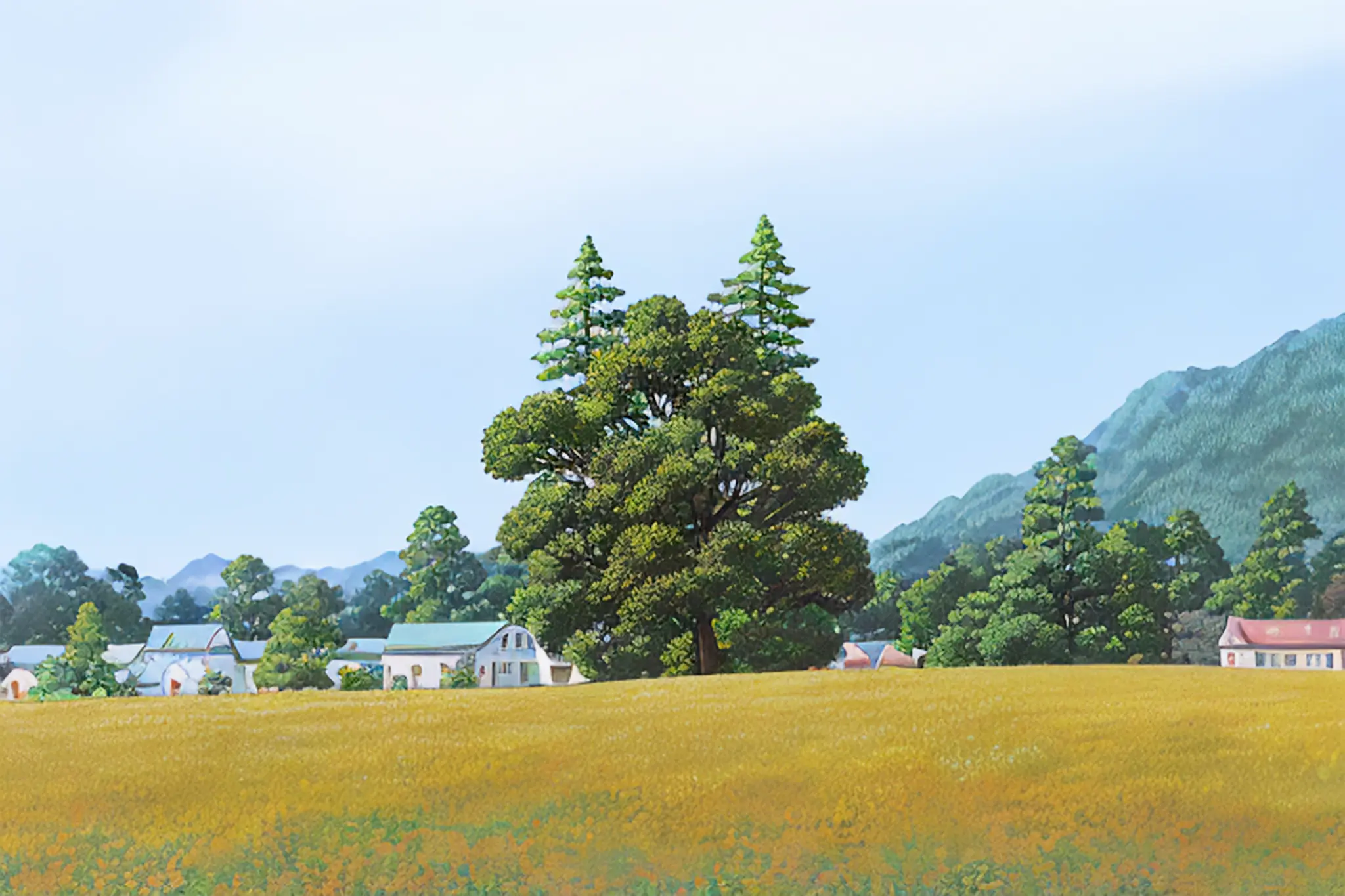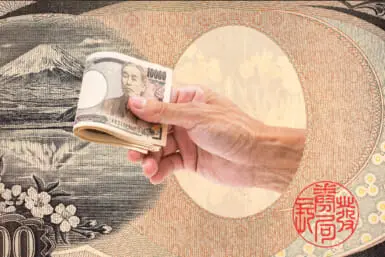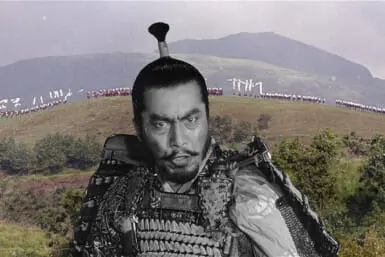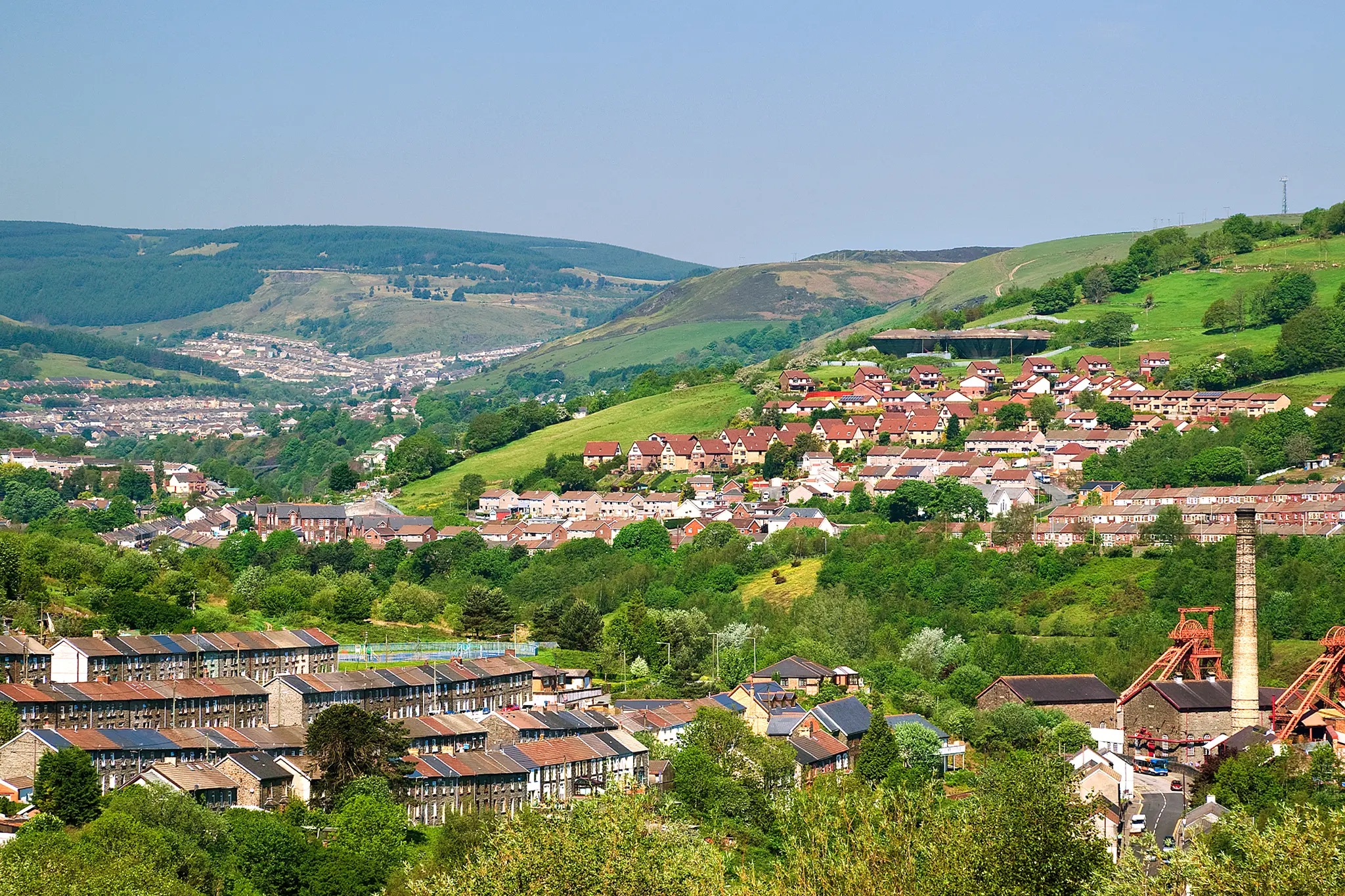
Rhondda Heritage Park | Billy Stock via Shutterstock
Laputa: Castle in the Sky — Rhondda (Wales)
Miyazaki visited Wales for the first time in 1984, the same year the U.K. miner’s strike began. Witnessing firsthand the industrial working class fighting back against Margaret Thatcher’s Conservative government left a deep impression on the Japanese director. “I admired the way they battled to save their way of life, just as the coal miners did in Japan. Many people of my generation see miners as a symbol; a dying breed of fighting men. Now they are gone,” he said in an interview with The Guardian in 2005.
Inspired, Miyazaki depicted miners in the 1986 film Laputa: Castle in the Sky as strong and courageous figures. Without their help, protagonists Pazu and Sheeta wouldn’t have been able to escape from the pirates in their search for the legendary floating castle. The Tokyo-native’s visit to Rhondda in South Wales is believed to have shaped the look and feel of the mining town in the movie. He’s also said to have been influenced by Welsh castles such as Caernarfon, Caerphilly and Powis for the design of the fortress of Tedis.
Trivia: Laputa: Castle in the Sky is Studio Ghibli’s first official film. Many consider Nausicaä of the Valley of the Wind, released two years earlier, to be the first, but that one was produced by Topcraft before it went bankrupt.
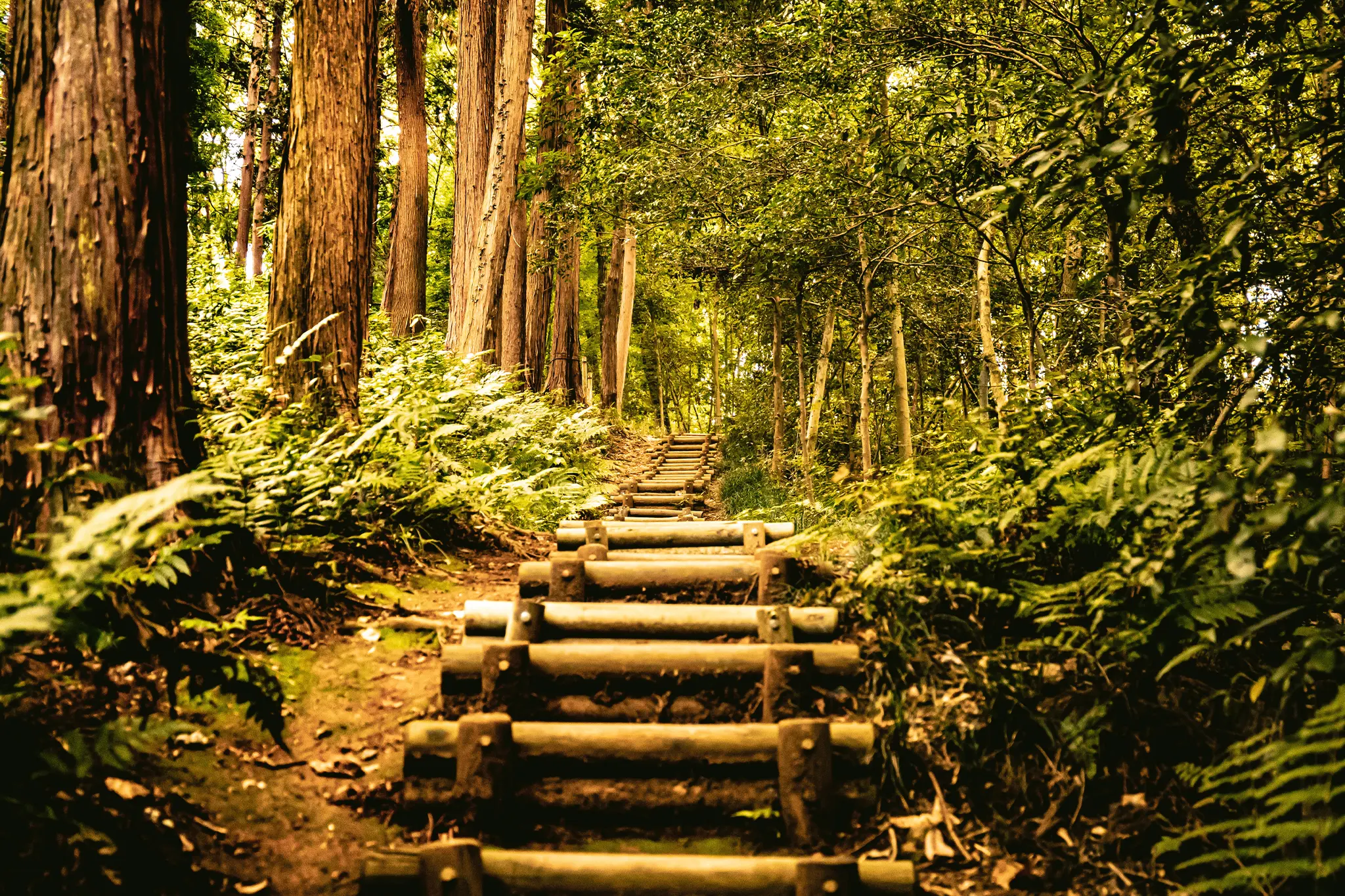
Totoro’s Forest | Riki Okubo via Shutterstock
My Neighbor Totoro — Sayama Hills, Tokorozawa (Saitama)
According to the book Totoro no Umareta Tokoro, the idea to make a film with a Japanese rural setting came to Miyazaki while working as a set designer for Isao Takahata’s 1979 television anime series Heidi, Girl of the Alps. “The greenery in Japan is better than Switzerland,” thought Miyazaki, so he decided to use Tokorozawa in Saitama Prefecture as the backdrop for his 1987 masterpiece My Neighbor Totoro. It’s based on memories he had of the place when he lived there with his wife in the 1960s.
The story centers around sisters, Satsuki and Mei, who discover playful spirits, including Totoro, in the woods behind their spooky old house. These woods were said to have been modeled after what is now known as Totoro Forest in Tokorozawa’s Sayama Hills region. In April 1990, the National Trust of Totoro no Furusato was born with the aim of preserving the lush greenery of Sayama Hills and its surrounding areas. A popular hiking destination around an hour from Tokyo, it’s home to some 1,600 species of plants and animals.
Trivia: Some conspiracy theorists believe My Neighbor Totoro is an allegory for the notorious 1963 Sayama Incident when a man kidnapped, raped and murdered 16-year-old Yoshie Nakata. Studio Ghibli denied the theory.
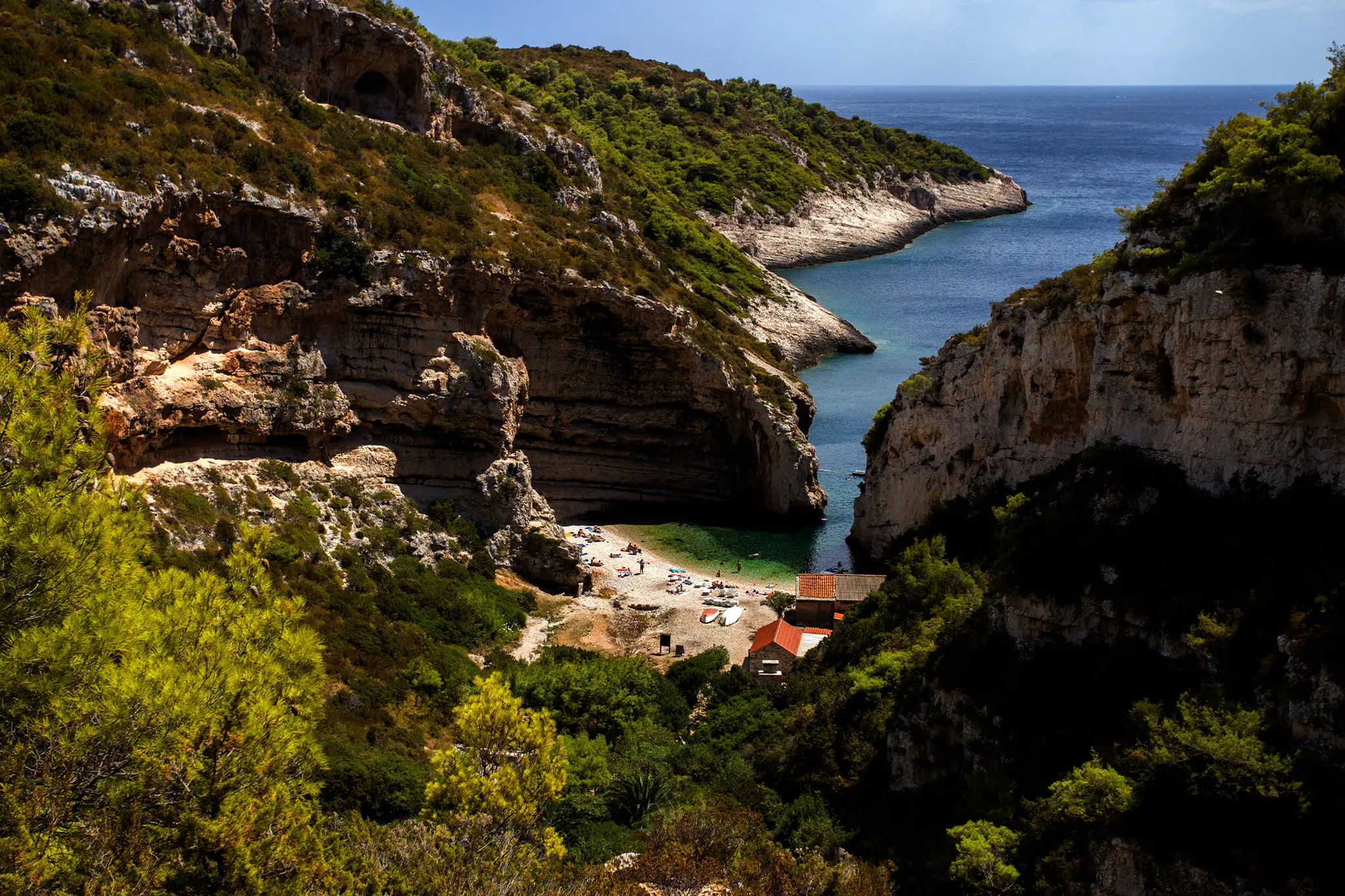
Stiniva Cove | ninopavisic via Shutterstock
Porco Rosso — Stiniva Cove, Vis (Croatia)
A story about a veteran World War I pilot who is cursed to look like an anthropomorphic pig, Porco Rosso takes place mostly in the Adriatic Sea, except for when the titular character (previously known as Marco) visits Milan. His hideout location is a huge limestone cave off the coast of the Croatian shoreline. This is modeled after Stiniva Cove on the island of Vis in Croatia. Formed during the Ice Age, it has been a protected nature monument since 1967 and in 2016 was voted Europe’s best beach.
“I wanted to make something light,” Miyazaki told Empire. “But then Yugoslavia collapsed and all these conflicts broke out in Dubrovnik, Croatia and the islands which were my setting. Suddenly, in the real world, it became a place where battle was happening. So, then Porco Rosso became a more complicated film. It was a very difficult film and I was so disappointed that I’d made something for middle-aged men, because I’d been telling my staff always to make films for children and then what did I do?”
Trivia: Porco Rosso was originally planned as a 35-40-minute in-flight movie for Japan Airlines. Eventually expanded into a feature-length production, it was Japan’s highest grossing film of 1992.
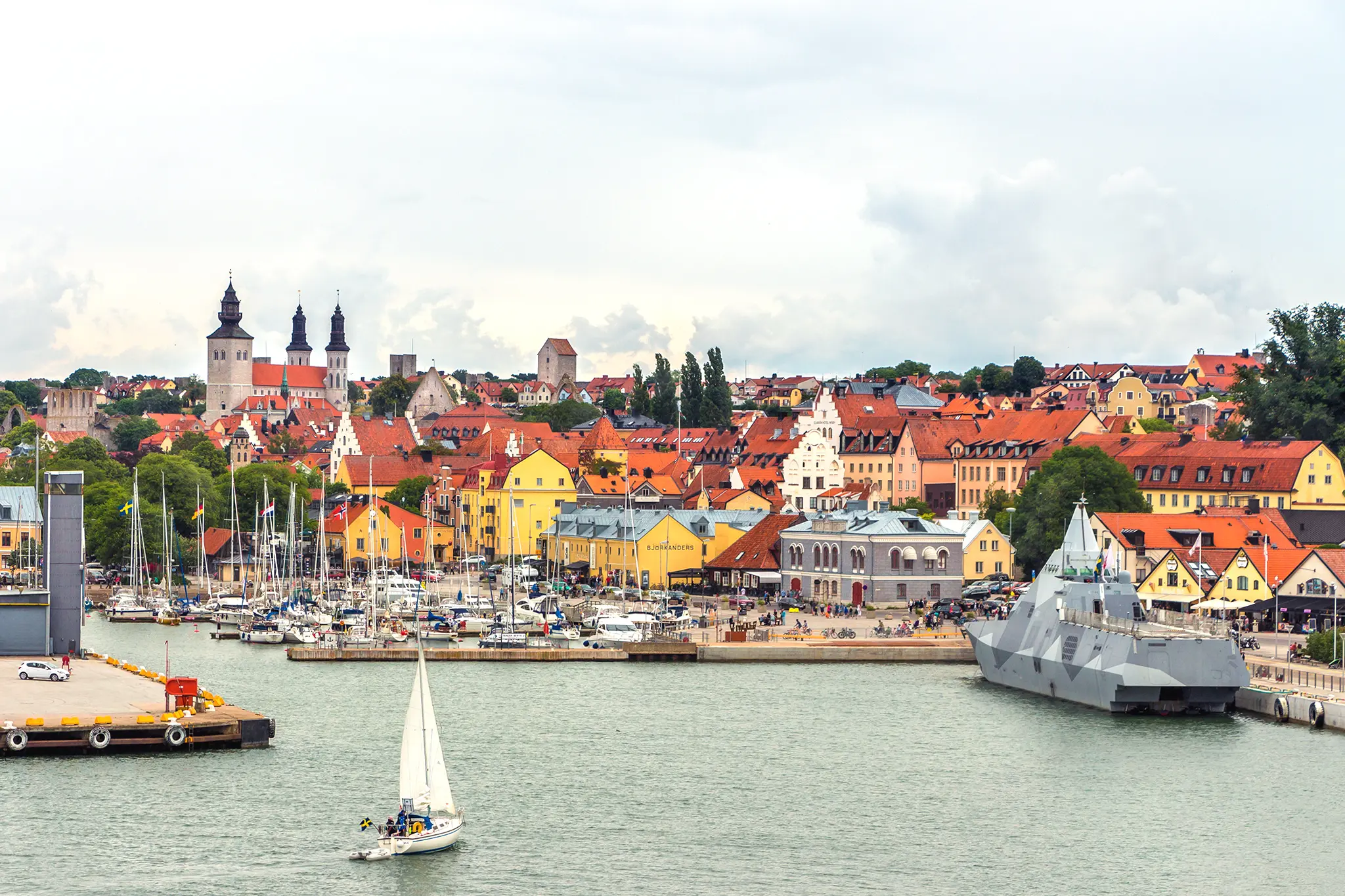
Visby, Gotland Island | Pixelheld via Shutterstock
Kiki’s Delivery Service — Stockholm and Visby (Sweden)
Miyazaki’s first overseas trip was to Sweden in 1971 for a meeting with Astrid Lindgren, the author of Pippi Longstocking. He was hoping to get the green light for an anime series based on the popular children’s novel. While that never materialized, the trip, which included visits to the Swedish capital of Stockholm and the picturesque town of Visby on the island of Gotland, had a profound effect on him. “Just being there was so exciting, to discover that Europe was completely different from what I’d expected,” he said.
Miyazaki returned to the two locations with his Ghibli team in the late 1980s. While there, they shot 80 rolls of film in preparation for the 1989 fantasy flick Kiki’s Delivery Service, about a 13-year-old witch who works as an air courier during her mandatory year of independent life. Alongside her talking cat Jiji, she goes to the seaside town of Koriko, which bears a strong resemblance to parts of Stockholm and Visby. Miyazaki said he also modeled the place on several other cities as well, including Dublin, Paris and San Francisco.
Trivia: In the original English dubbed version, Jiji was voiced by Phil Hartman (Saturday Night Live, The Simpsons) in what was his last role before his wife tragically killed him in a murder-suicide.
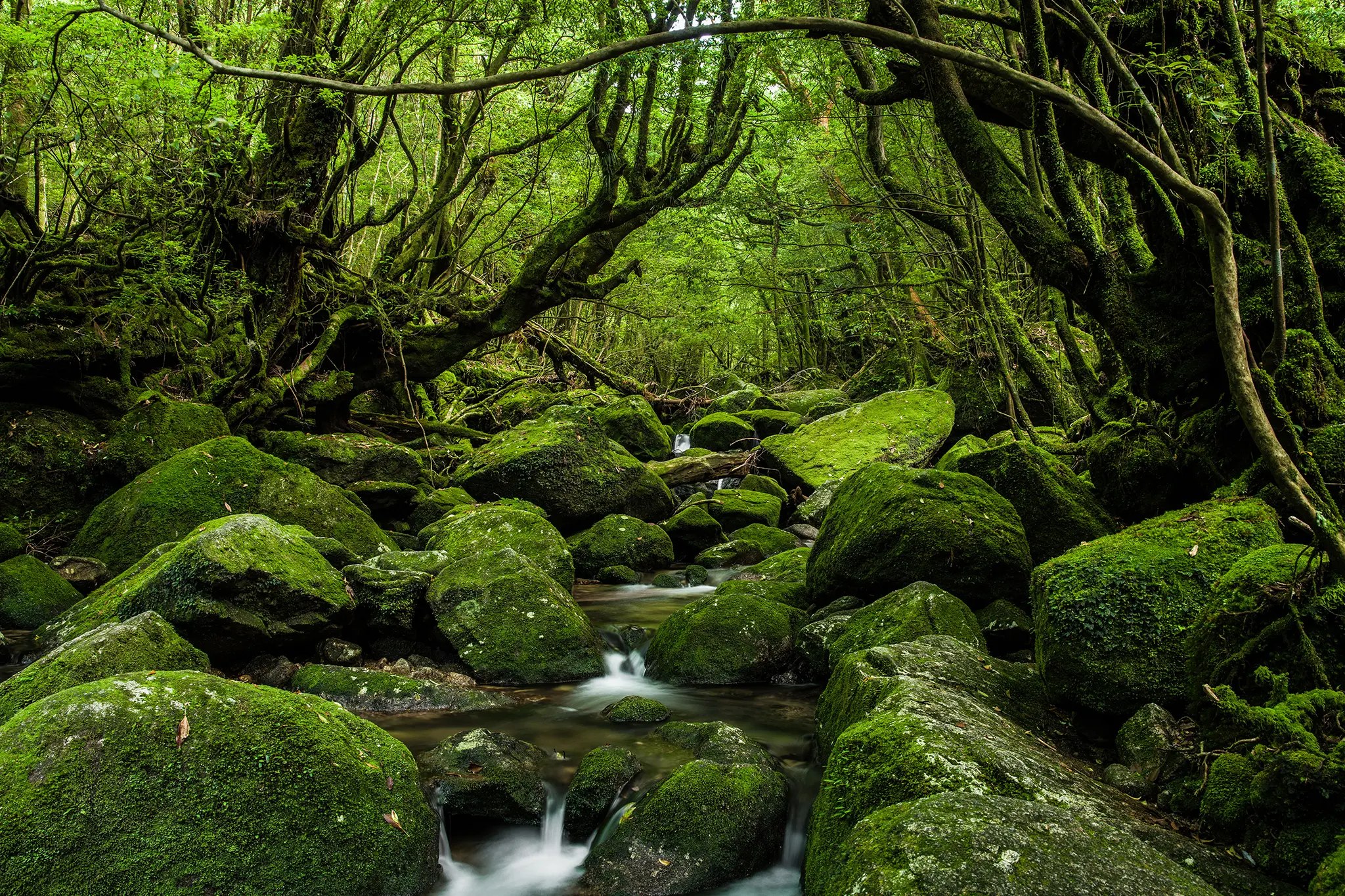
Yakushima | Al To via Shutterstock
Princess Mononoke — Yakushima (Kagoshima) and Shirakami-Sanchi (Akita and Aomori)
An epic film exploring the delicate human civilization and the natural world, Princess Mononoke was the first Studio Ghibli film to get a theatrical release in the U.S. Miyazaki began working on ideas for the movie in the 1970s, though he didn’t start properly writing the plot line and drawing the initial storyboards until 1994. A year later, he and a team of animators and artists traveled to the remote island of Yakushima in Kagoshima Prefecture and the mountainous area of Shirakami-Sanchi which extends over Tohoku’s Akita and Aomori prefectures.
These two dream-like locations were registered as Japan’s first UNESCO Natural World Heritage sites in 1993. The luscious green of both destinations is captured magnificently in Princess Mononoke, particularly Shiratani Unsuikyo Ravine, an enchanting area of verdant mosses that looks like a fantasy world. Yakushima is also home to Jomon Sugi, thought to be the oldest tree in Japan. According to scientists, it could be anywhere between 2,000 and 7,200 years old. The ecosystem at Shirakami-Sanchi was formed after the last ice age, around 8,000 years ago.
Trivia: Notorious movie producer Harvey Weinstein wanted to shorten Princess Mononoke from 135 minutes to 90 for American audiences. He eventually relented after being told by producer Toshio Suzuki “No cuts!” while being presented with a replica samurai sword.
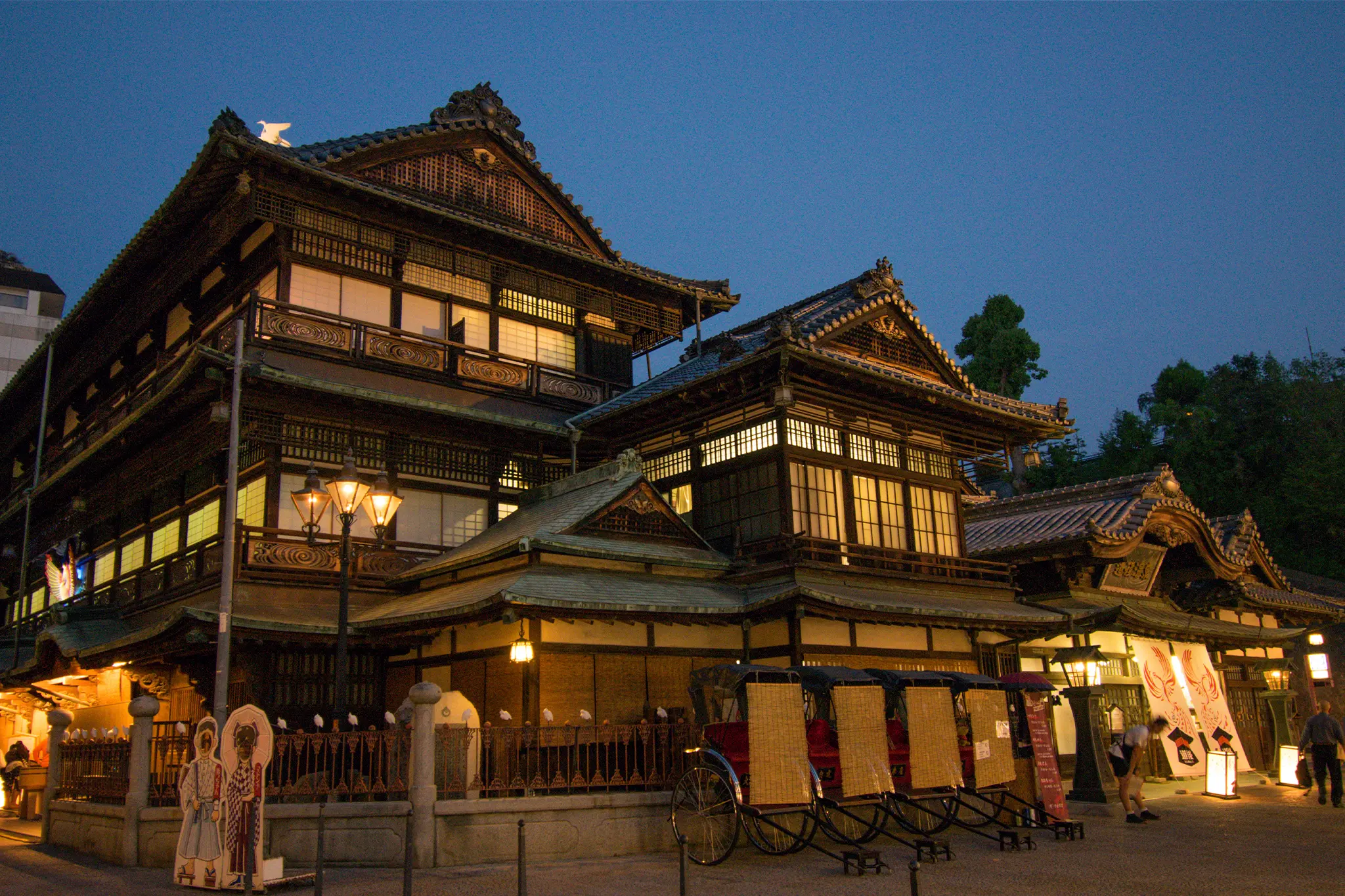
Dogo Onsen Honkan | AdrianoK via Shutterstock
Spirited Away — Dogo Onsen (Matsuyama, Ehime)
Described by Steven Spielberg as “one of the greatest animated films ever made,” Spirited Away, the second highest grossing Japanese movie of all time, tells the story of a 10-year-old girl named Chihiro who wanders into a town run by gods, witches and spirits. She’s then forced to work in the bathhouse Aburaya, owned by the evil witch Yubaba, after her parents are turned into pigs. The modern Japanese-style exterior of Aburaya looks identical to the complex wooden structure of Dogo Onsen Honkan (main building) in Matsuyama city.
Mentioned in ancient Japanese texts such as Manyoshu, Dogo Onsen is one of the oldest hot springs in Japan. The bathhouse was built in 1894 and designated as an important cultural property a century later. It became a favorite retreat of the imperial family and several highly revered authors, such as Natsume Soseki, who featured it in his book, Botchan. Another popular spot for fans of Spirited Away is the former mining town of Jiufen in Taiwan. Miyazaki, however, has denied that it was the model city for the movie.
Trivia: The second film after Shrek to win the Academy Award for Best Animated Feature, Miyazaki didn’t fly to America to pick up the prize because of his opposition to the Iraq War.
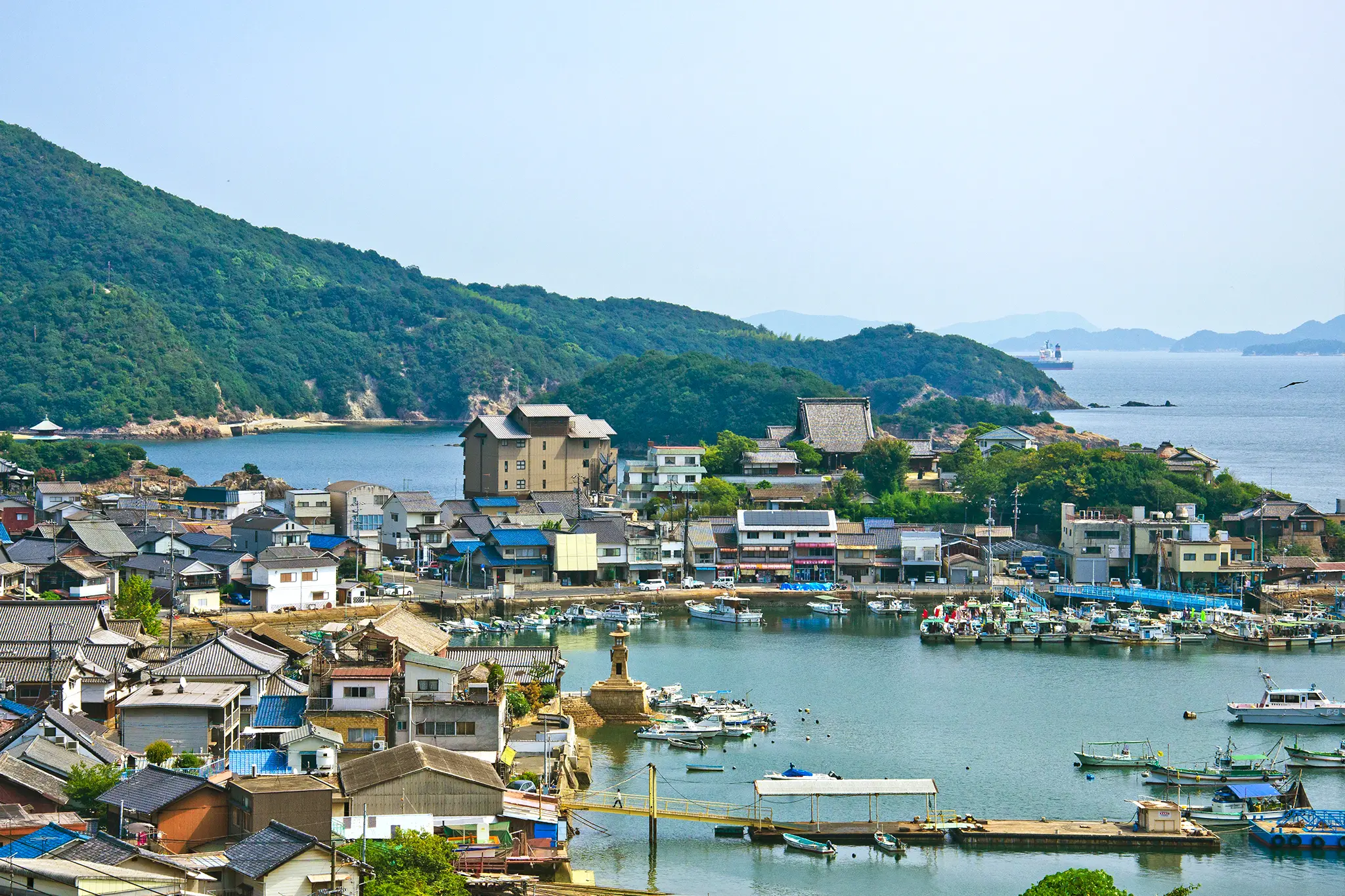
Tomonoura Port | Tanya Jones via Shutterstock
Ponyo — Tomonoura Port Town, Fukuyama (Hiroshima)
A quaint port town in Hiroshima’s Fukuyama city, Tomonoura immediately appealed to Miyazaki when he visited on a company trip in 2004. In fact, he loved the place so much, he rented a detached house there for about two months. During that time, he reportedly developed the concept for his 2009 movie Ponyo. The famed director confirmed that the film’s setting was Tomonoura in an interview with Collider. Though it was supposed to be “an anonymous town,” a scene with a banner promoting Tomonoura’s “Nunakuma Shrine” gave it away.
Ponyo, inspired by Hans Christian Andersen’s The Little Mermaid and Richard Wagner’s opera Die Walküre, centers around a 5-year-old boy named Sosuke and his relationship with a magical goldfish that escapes from the ocean and is washed ashore in a glass jar. The retro fishing townscape of Tomonoura, therefore, fits well with the story. It boasts charming alleyways, historic sites and a picture-perfect harbor. The idyllic town isn’t just a great setting for anime productions. Several live-action movies and dramas have been filmed there, including, most famously, The Wolverine.
Trivia: Lead character Sosuke, whose name is said to have been taken from the protagonist of Soseki’s 1910 novel The Gate, is based on Miyazaki’s son, Goro, when he was 5.

